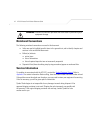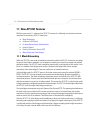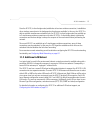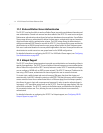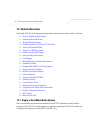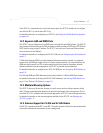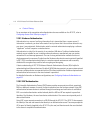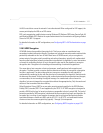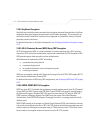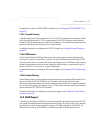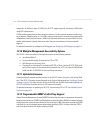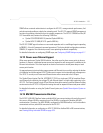
AP-5131 Access Point Product Reference Guide
1-8
For an overview of the Radio 1 (2.4 GHz) and Radio 2 (5.2 GHz) antennas supported on the AP-5131’s
Reverse SMA (RSMA) connectors, see Antenna Specifications on page A-4.
1.2.5 Sixteen Configurable WLANs
A Wireless Local Area Network (WLAN) is a data-communications system that flexibly extends the
functionalities of a wired LAN. A WLAN does not require lining up devices for line-of-sight
transmission, and are thus, desirable for wireless networking. Roaming users can be handed off from
one AP-5131 to another like a cellular phone system. WLANs can therefore be configured around the
needs of specific groups of users, even when they are not in physical proximity. Sixteen WLANs are
configurable on each AP-5131.
To enable and configure WLANs on an AP-5131 radio, see Enabling Wireless LANs (WLANs) on page
5-22.
1.2.6 Support for 4 BSSIDs per Radio
The AP-5131 supports four BSSIDs per radio. Each BSSID has a corresponding MAC address. The first
MAC address corresponds to BSSID #1. The MAC addresses for the other three BSSIDs (BSSIDs #2,
#3, #4) are derived by adding 1, 2, 3, respectively, to the radio MAC address.
If the radio MAC address displayed on the Radio Settings screen is 00:A0:F8:72:20:DC, then the
BSSIDs for that radio will have the following MAC addresses:
For detailed information on strategically mapping BSSIDs to WLANs, see Configuring the 802.11a or
802.11b/g Radio on page 5-48.
BSSID MAC Address Hexadecimal Addition
BSSID #1 00:A0:F8:72:20:DC Same as Radio MAC address
BSSID #2 00:A0:F8:72:20:DD Radio MAC address +1
BSSID #3 00:A0:F8:72:20:DE Radio MAC address +2
BSSID #4 00:A0:F8:72:20:DF Radio MAC address +3



